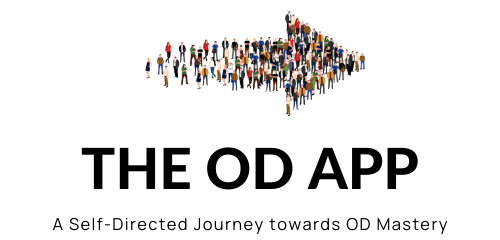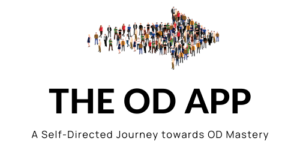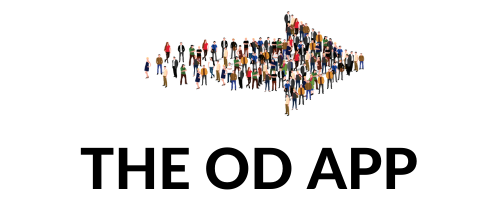Description
To work effectively with a living system, an OD practitioner needs to have deep insight into themself—who they are, how they work, and their own instrumentality. It is important that they know their ‘self’ well and then be able to use their ‘self’ effectively in order to create and manage their impact on a client system. A competent OD practitioner is a self-aware practitioner who becomes increasingly confident and skilled at applying their unique ‘self’ to serve their clients, adapting themselves to do the required work.
There are two school of thoughts around the concept of use of self.
- There is a long historical debate around the concept of the “use of self”. Those from the positivist perspective assert the importance of maintaining a carefully detached and objective stance when working with others. For the positivist school of thinking, if the “self” is not sufficiently controlled, the personal experience of the therapist/helper will negatively influence the work they are doing with their clients. Freud belonged to this school, and it was said that he would sit behind his clients in therapy sessions in an attempt to remain detached from them.
- The non-positivist perspective offers an alternative paradigm. It underscores the value of subjective information and insights, believing that the social world is relative, emerging from the process of ongoing human interaction. It is thus best understood from the vantage point of the individuals involved in those interactions. The ultimate success of any OD intervention rests with the practitioner and what they bring to the process. From this perspective, the self is the most important tool of an OD practitioner. This understanding is summed up by writers (like Fritz Perls) who believed it is important to bring both those who help and those who receive help onto the centre stage together to “illuminate their actual relationship as clearly as possible.”
The following quotes point to what is meant by ‘use of self’ (as noted in Cheung-Judge and Jamieson’s Global Use of Self Research Report):
- The use of self is the way in which one acts upon one’s observations, values, feelings and so forth, in order to have an effect on the other (Nevis)
- The use of self is the conscious use of one’s whole being in the intentional execution of one’s roles for effectiveness in whatever the current situation is presenting. The purpose is to be able to execute a role effectively, for others and for the system they are in, without personal interference (e.g. bias, blindness, avoidance, and agendas) …to have clear intentions and choices. (Jamieson)
- The simplest way we know how to talk about the use of self is to link the concepts of self-awareness, perceptions, choices and actions as the fundamental building blocks of our capacities to be effective agents of the change. (Seashore)
Because all OD practitioners work in dynamic living systems, their tools and methods are crucially dependent upon how effectively they use themselves—moment by moment like a fine-tuned instrument—to support the system towards its own desired aims and goals. As Burke said, “the primary instrument in OD work is the consultant practitioners.” Hence the use of self as a competence is central to the practice of OD. When an OD practitioner is adept in this competency, they become a powerful instrument for supporting the clients.
Experienced by clients
Practitioners competent with respect to their use of self are experienced as authentic, straight-forward, and intentional in what they do, what they say, and how they behave. Comfortable and humbly confident in their own skin, these practitioners are able to be appropriately either strong or vulnerable around their own issues while engaging with clients. This helps create a safe environment in which a client can likewise be authentic; empowered and inspired by the role-model of the consultant to engage the needs of their system. When practitioners are effective in their use of self, they gain “reference power”—by being who they are, people refer to them. They will also come across as flexible, not rigid or fixed in either methods or outcomes. Willing themselves to take risks, they help clients likewise to be bolder in the process of exploring alternative ways of work. These OD practitioners are trusted by clients who know “what you see is what you get.”
What the competence ‘looks like’
The characteristics and qualities noted below are not intended to be exhaustive or definitive. Nor are they in any particular order. Nor are the distinctions between ‘Knowledge’, ‘Skills/Abilities’ and ‘Character/Attitude’ hard and fast—rather they are heuristic categories with obviously overlapping edges. The intention is merely to provide a frame of reference for considering important aspects of the Use of Self competence, especially as it relates to one’s own practice.



